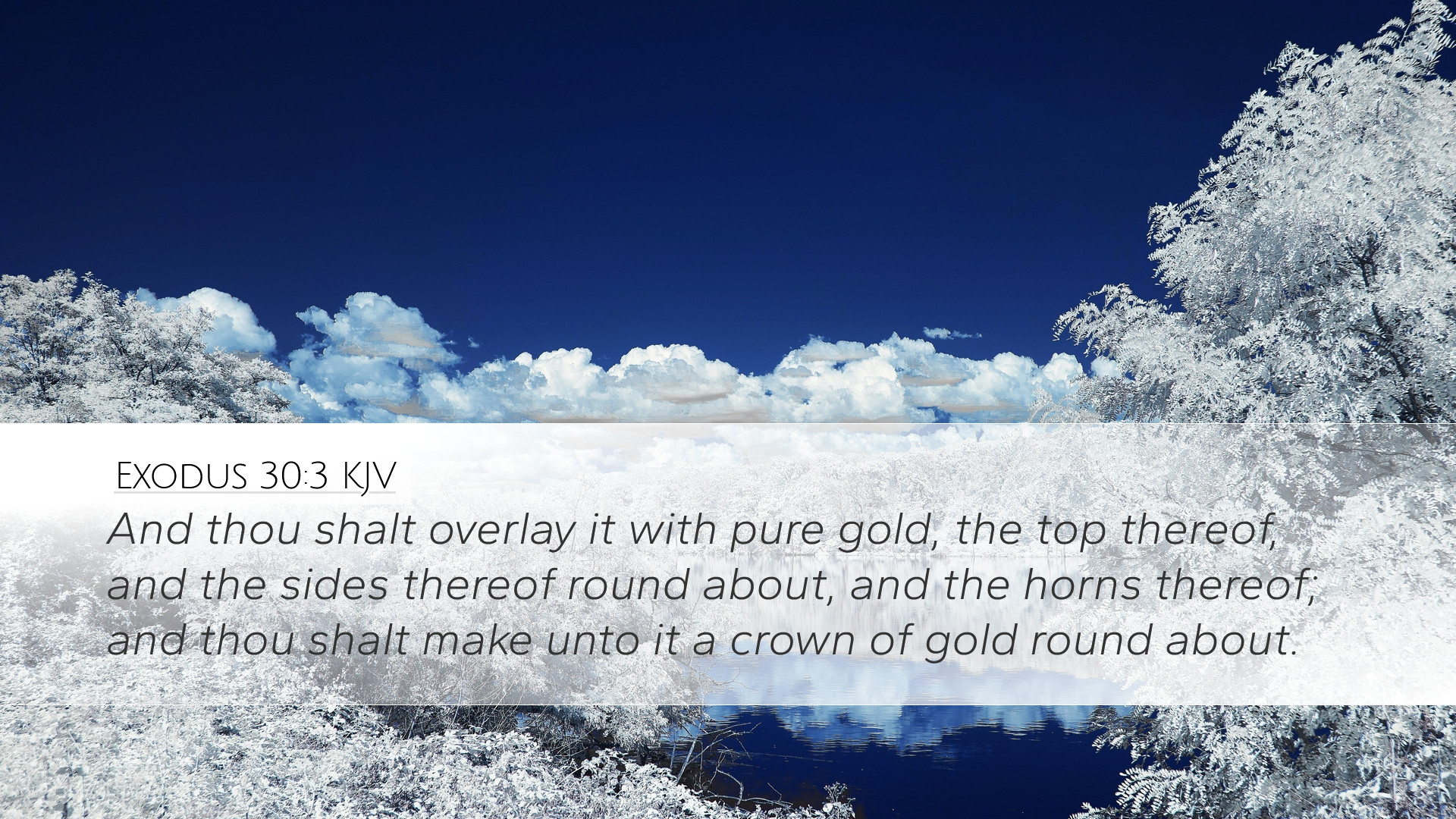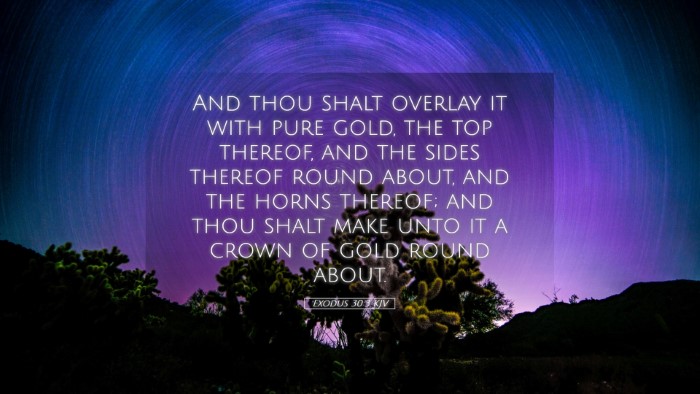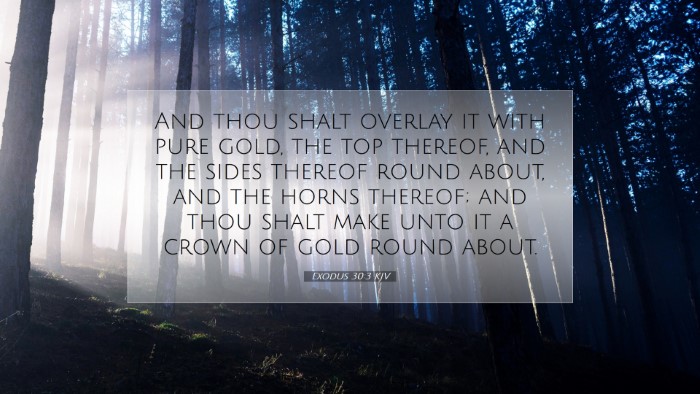Commentary on Exodus 30:3
Exodus 30:3 (KJV): "And thou shalt overlay it with pure gold, within and without shalt thou overlay it, and shalt make upon it a crown of gold round about."
Introduction
The verse of Exodus 30:3 focuses on the detailed instructions given by God regarding the construction of the altar of incense within the Tabernacle. This analysis synthesizes insights from public domain commentaries to provide a comprehensive understanding of the significance of the altar, the materials involved, and its theological implications.
The Significance of the Altar of Incense
According to Matthew Henry, the altar of incense signifies the prayers of the saints, rising as a sweet aroma unto God. It illustrates the centrality of prayer in worship and the need for an intermediary to approach God.
Albert Barnes adds that the altar, placed in the holy place, represents a closer engagement with God's presence, distinguishing it from the outer altar of sacrifice. This proximity symbolizes the importance of prayer in the context of worship and communion with the divine.
Materials and Their Symbolism
The requirement to overlay the altar with pure gold, as noted by Adam Clarke, speaks to the purity and divinity of God. Gold is an emblem of glory and divinity, and its use in the construction signifies the holiness that must accompany any approach to God in prayer.
- Pure Gold: Represents the divine nature of God and emphasizes that what is dedicated to Him must be of the highest quality (Henry).
- Crown of Gold: The crown signifies kingship and authority, underscoring that prayer originates from the throne of God (Barnes).
The Instruction to Overlay
Henry reflects on the significance of the specific instruction to overlay the altar both "within and without." This act symbolizes that not only should the outward appearance be glorious, but the inner reality must also reflect purity and holiness. True worship, thus, must come from a pure heart.
Clarke highlights that the meticulous nature of this command indicates that God desires excellence in worship practices. The double overlay reinforces that God looks at both our outer actions and inner motives.
The Role of the Altar in Worship
In the context of the ceremonial law, the altar of incense played a crucial role in the annual Day of Atonement rituals as noted by Barnes. It was here that incense was burned, emblematic of the prayers ascending to heaven during the forgiving process.
- The altar was a symbol of dependence on God for mercy and forgiveness (Henry).
- It reinforced the concept of mediation; the priest acted as an intermediary between the people and God (Clarke).
The Crown of Gold: Authority and Sovereignty
The crown that surrounds the altar, as noted by Henry, serves a dual purpose: it signifies both protection and exaltation of the altar, representing God’s sovereignty over prayer. It emphasizes that the prayers of the faithful are protected and sanctified within the royal authority of God.
Barnes indicates that the crown also affirms God's royal character and majesty; thus, prayer is engaged within the context of God's kingdom, highlighting the theme of divine sovereignty in worship.
Conclusion
Exodus 30:3 encapsulates significant theological truths concerning prayer, the nature of God, and the sacredness of worship. The directions for constructing the altar of incense remind believers of the seriousness with which God regards their approach to Him.
As the Tabernacle was a dwelling place of God among His people, the altar of incense represents the ongoing need for communication with God and the assurance that through Christ, our prayers can ascend to the very throne of grace.
In summary, understanding the nuances of Exodus 30:3 enhances the appreciation of the divine sanctuary's architecture and the profound implications it holds for spiritual life and worship today.


